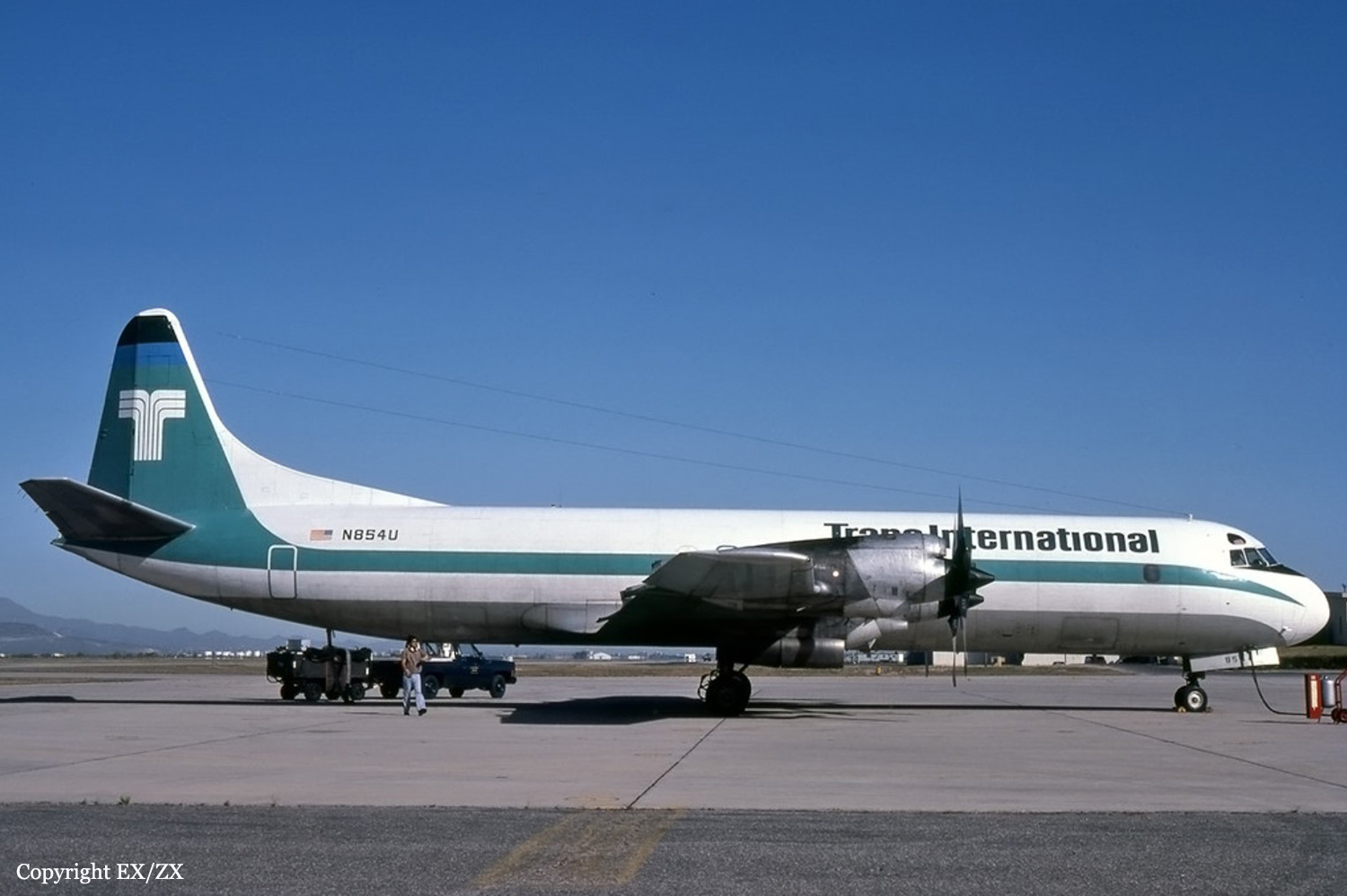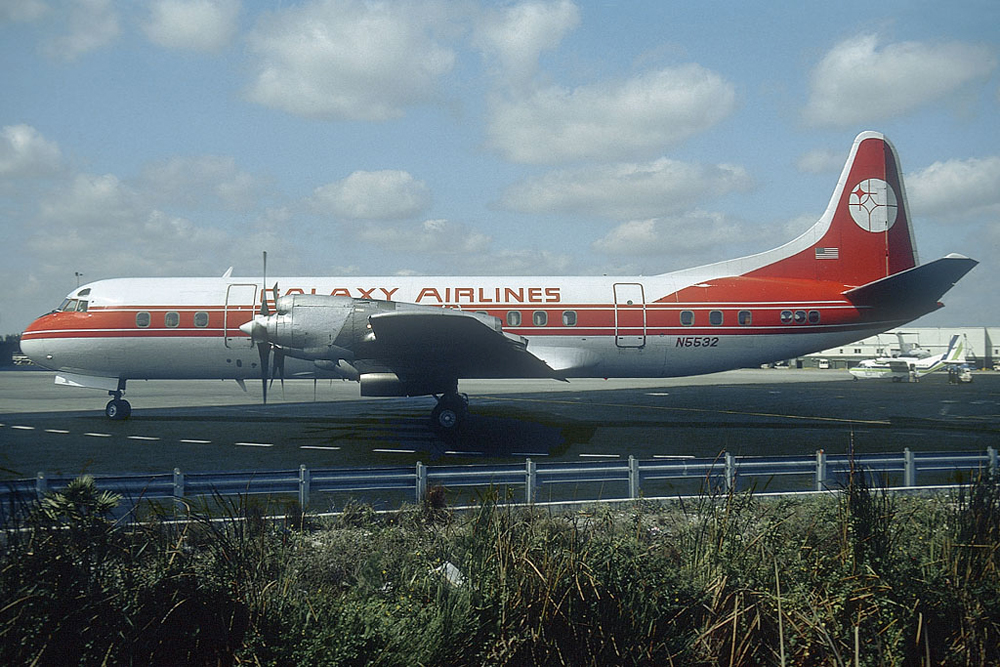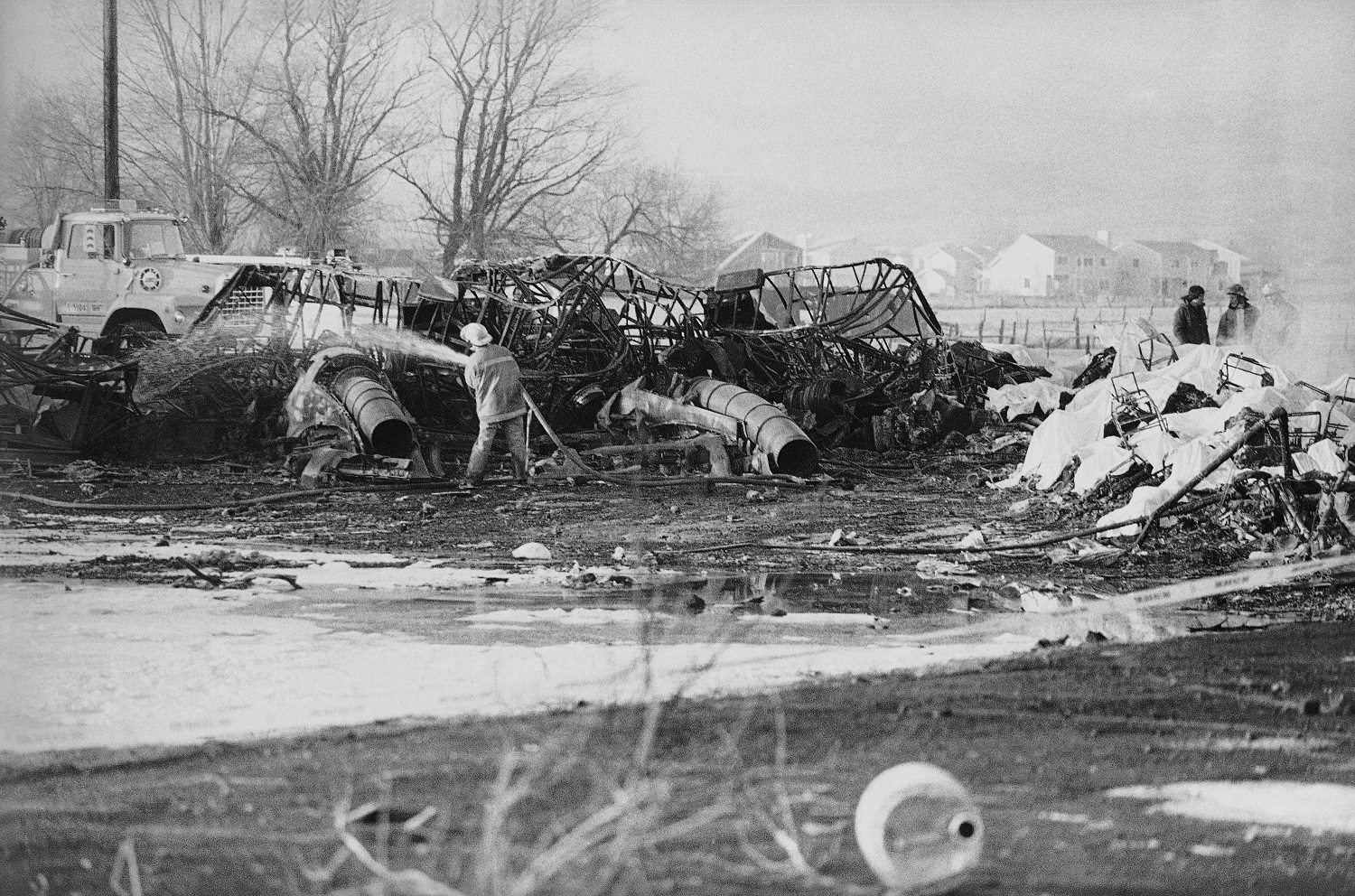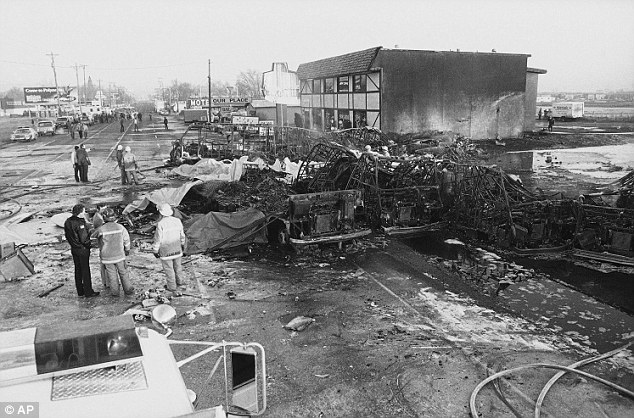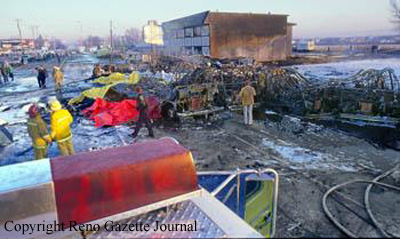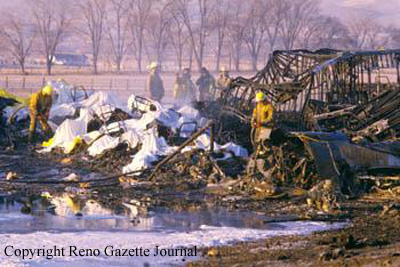Crash of a Beechcraft 65-A80 Queen Air in Soldotna: 9 killed
Date & Time:
Feb 4, 1985 at 1951 LT
Registration:
N50NP
Survivors:
No
Schedule:
Anchorage - Soldotna
MSN:
LD-231
YOM:
1965
Flight number:
NPA1802
Crew on board:
2
Crew fatalities:
Pax on board:
7
Pax fatalities:
Other fatalities:
Total fatalities:
9
Captain / Total hours on type:
2985.00
Aircraft flight hours:
12106
Circumstances:
During arrival, the crew of NP flight 1802 contacted the company weather observer at Soldotna who advised the weather was: wind calm, ceiling 600 to 800 feet, visibility 8 to 10 miles, no precipitations. They made an NDB approach, but missed the approach and requested another approach. Approximately one minute later, the crew reported the aircraft had accumulated a heavy load of ice. They could have diverted nearby to Kenai for an ILS approach, but elected to make a VOR approach back to Soldotna. While being vectored, they made two more checks with the weather observer who advised the weather had deteriorated to below minimums and recommended diverting, but the crew did not acknowledge. Subsequently, the aircraft collided with trees on high terrain approximately 1.5 mile southeast of the airport. There was evidence the aircraft was circling when it crashed. Circling was not authorized south of runway 07/25. Investigations revealed recurring problems with the anti-ice system, its 'single' mode was inoperative, two de-ice boots were missing from prop blades. Weather station listed only one lighted marker (1/4 mile away) for visibility reference; minimum landing visibility was one mile; ceilometer was inoperative. No FAA inspection of weather station in 2 years. Icing forecasted. All nine occupants were killed.
Probable cause:
Occurrence #1: in flight encounter with weather
Phase of operation: approach
Findings
1. (f) anti-ice/deice system - inadequate
2. (f) maintenance - inadequate - company maintenance personnel
3. (f) inadequate surveillance of operation - faa (organization)
4. (f) operation with known deficiencies in equipment - performed - pilot in command
5. (f) other airport/runway maintenance - not maintained - company/operator management
6. (f) inadequate surveillance of operation - faa (organization)
7. (f) meteorological service - inadequate - company/operator management
8. (f) inadequate surveillance of operation - faa (organization)
9. (f) weather condition - low ceiling
10. (f) weather condition - fog
11. (f) weather condition - rain
12. (f) weather condition - icing conditions
13. (f) flight into known adverse weather - performed - pilot in command
14. (f) wing - ice
15. (f) weather condition - below approach/landing minimums
16. Missed approach - initiated - pilot in command
17. (f) not performed - pilot in command
----------
Occurrence #2: in flight collision with object
Phase of operation: circling (ifr)
Findings
18. (c) in-flight planning/decision - improper - pilot in command
19. (c) missed approach - improper - pilot in command
20. (f) terrain condition - high terrain
21. (c) minimum descent altitude - not maintained - pilot in command
22. (f) object - tree(s)
Phase of operation: approach
Findings
1. (f) anti-ice/deice system - inadequate
2. (f) maintenance - inadequate - company maintenance personnel
3. (f) inadequate surveillance of operation - faa (organization)
4. (f) operation with known deficiencies in equipment - performed - pilot in command
5. (f) other airport/runway maintenance - not maintained - company/operator management
6. (f) inadequate surveillance of operation - faa (organization)
7. (f) meteorological service - inadequate - company/operator management
8. (f) inadequate surveillance of operation - faa (organization)
9. (f) weather condition - low ceiling
10. (f) weather condition - fog
11. (f) weather condition - rain
12. (f) weather condition - icing conditions
13. (f) flight into known adverse weather - performed - pilot in command
14. (f) wing - ice
15. (f) weather condition - below approach/landing minimums
16. Missed approach - initiated - pilot in command
17. (f) not performed - pilot in command
----------
Occurrence #2: in flight collision with object
Phase of operation: circling (ifr)
Findings
18. (c) in-flight planning/decision - improper - pilot in command
19. (c) missed approach - improper - pilot in command
20. (f) terrain condition - high terrain
21. (c) minimum descent altitude - not maintained - pilot in command
22. (f) object - tree(s)
Final Report:




